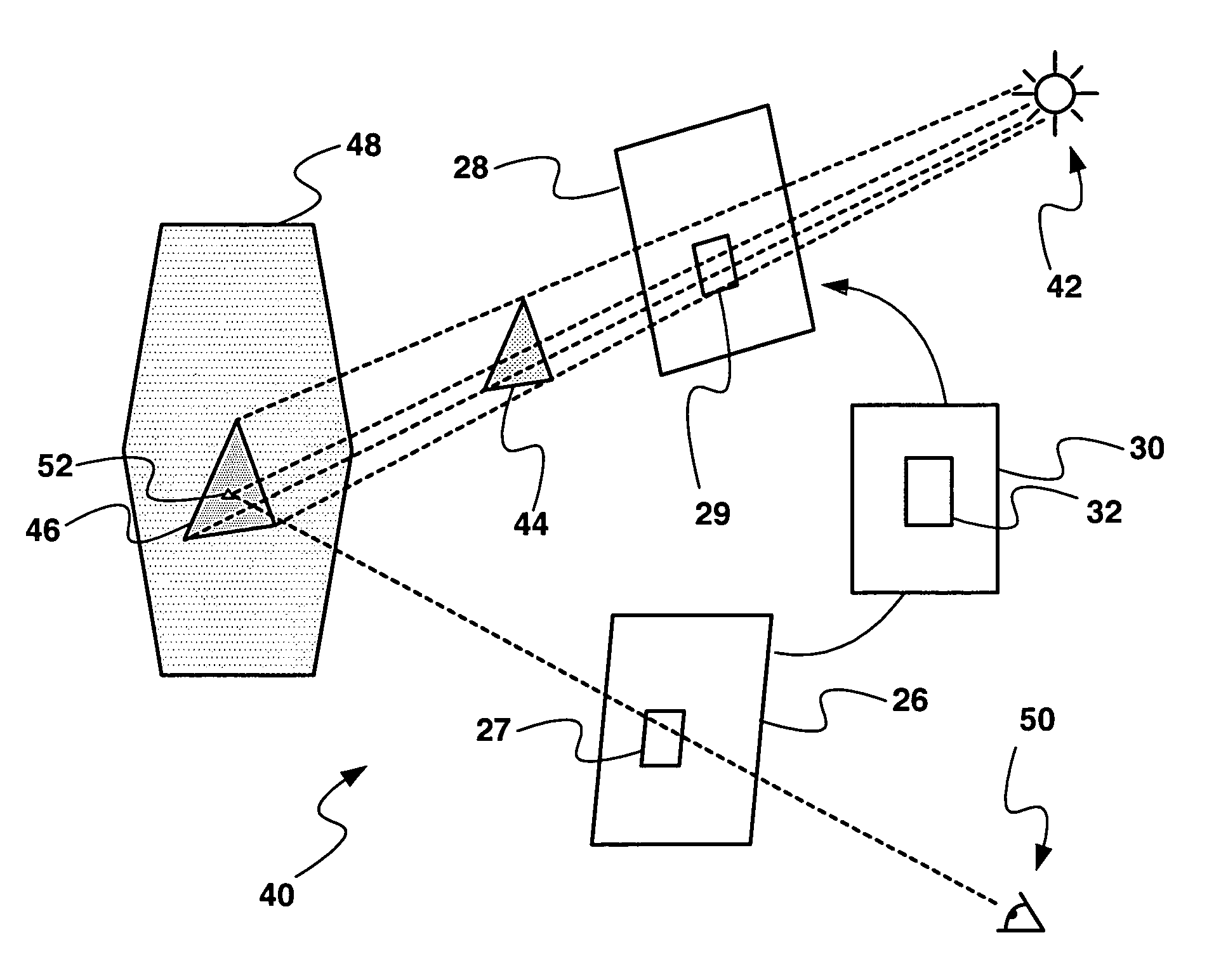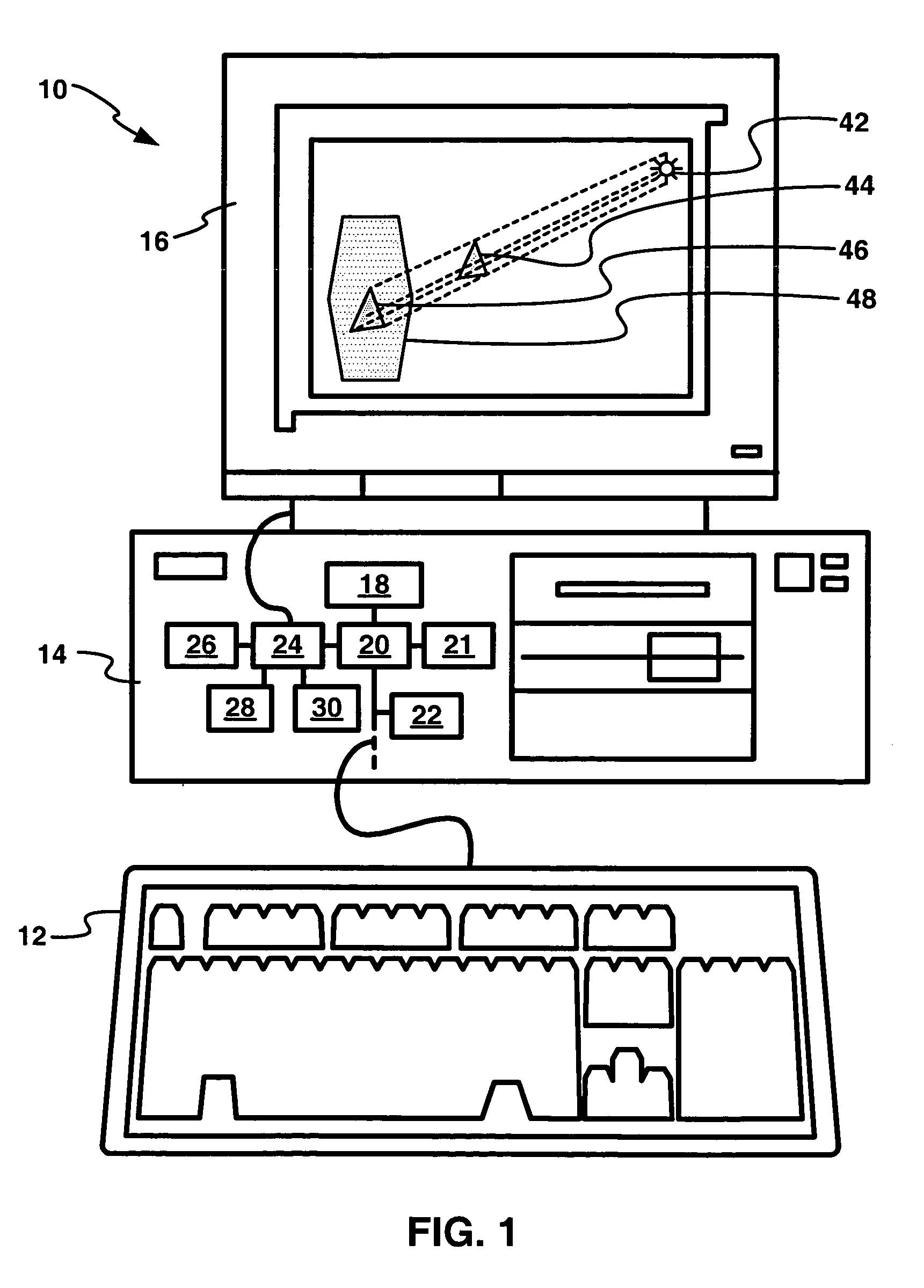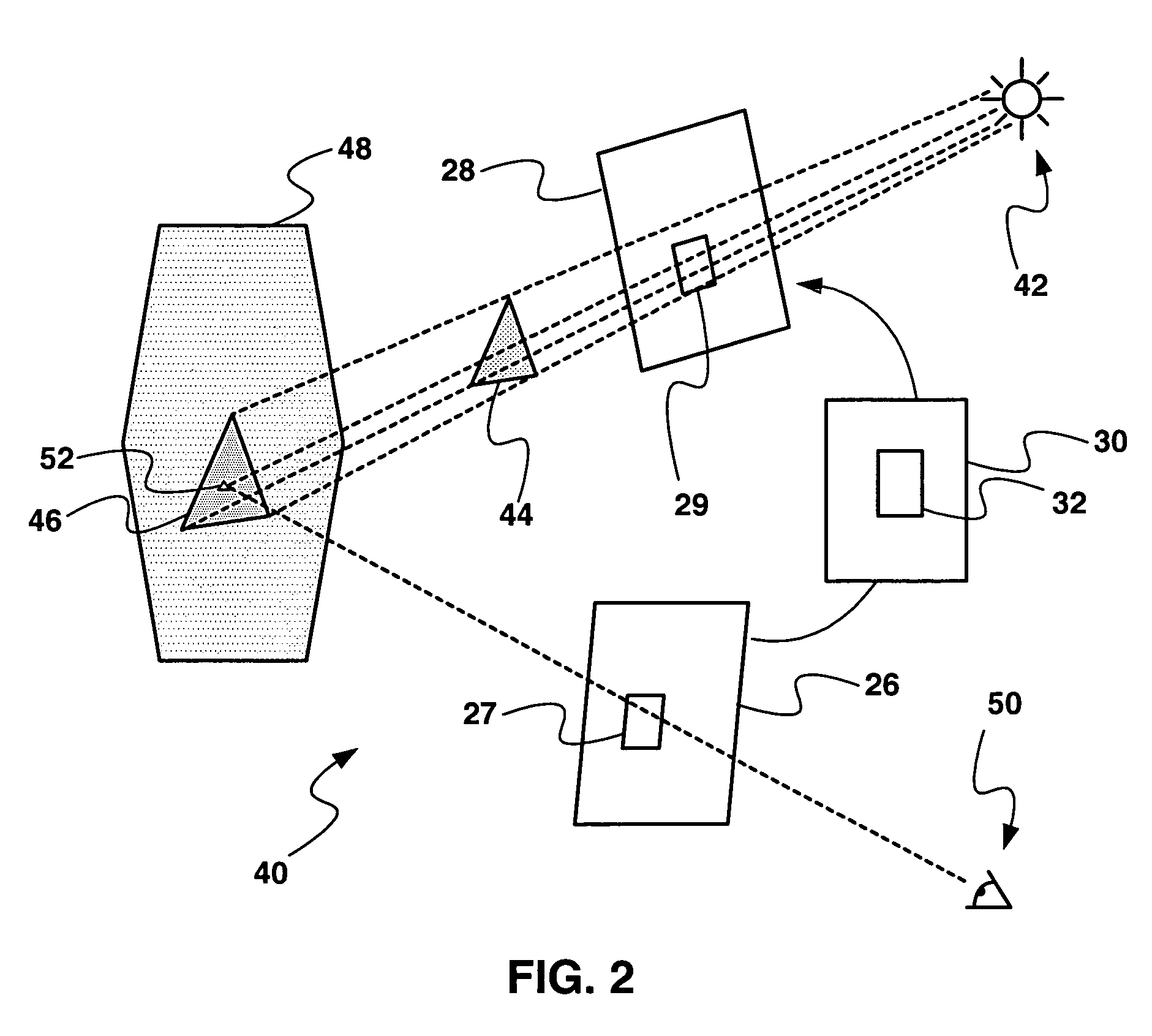System and method for shadow rendering
a shadow rendering and shadow technology, applied in the field of video graphics rendering, can solve the problems of multiple passes, high overhead and time delay, and achieve the effect of latency and needed storage capacity
- Summary
- Abstract
- Description
- Claims
- Application Information
AI Technical Summary
Benefits of technology
Problems solved by technology
Method used
Image
Examples
Embodiment Construction
[0022]Referring now to FIG. 1, therein is shown a computing system 10 which includes an input device 12, a computing device 14, and an output display 16. The computing device 14 contains all the conventional components for operation of the computing system 10, including a central processing unit (CPU) 18. The CPU 18 performs most of the computation operations of the computing device 14 except those related to the output display 16. The CPU 18 is connected to a north bridge chip 20, which in turn is connected to a south bridge chip 22. The north bridge chip 20 is an interconnection chip to memory 21 and to a graphics chip 24. The south bridge chip 22 contains peripheral components related circuitry.
[0023]The graphics chip 24 is a graphics coprocessor which performs calculations necessary for high quality, high speed graphics, such as that used in 3D games. The graphics chip 24 comprises a frame buffer 26, a shadow buffer 28, and memory 30 operatively associated with it although in so...
PUM
 Login to View More
Login to View More Abstract
Description
Claims
Application Information
 Login to View More
Login to View More - R&D
- Intellectual Property
- Life Sciences
- Materials
- Tech Scout
- Unparalleled Data Quality
- Higher Quality Content
- 60% Fewer Hallucinations
Browse by: Latest US Patents, China's latest patents, Technical Efficacy Thesaurus, Application Domain, Technology Topic, Popular Technical Reports.
© 2025 PatSnap. All rights reserved.Legal|Privacy policy|Modern Slavery Act Transparency Statement|Sitemap|About US| Contact US: help@patsnap.com



